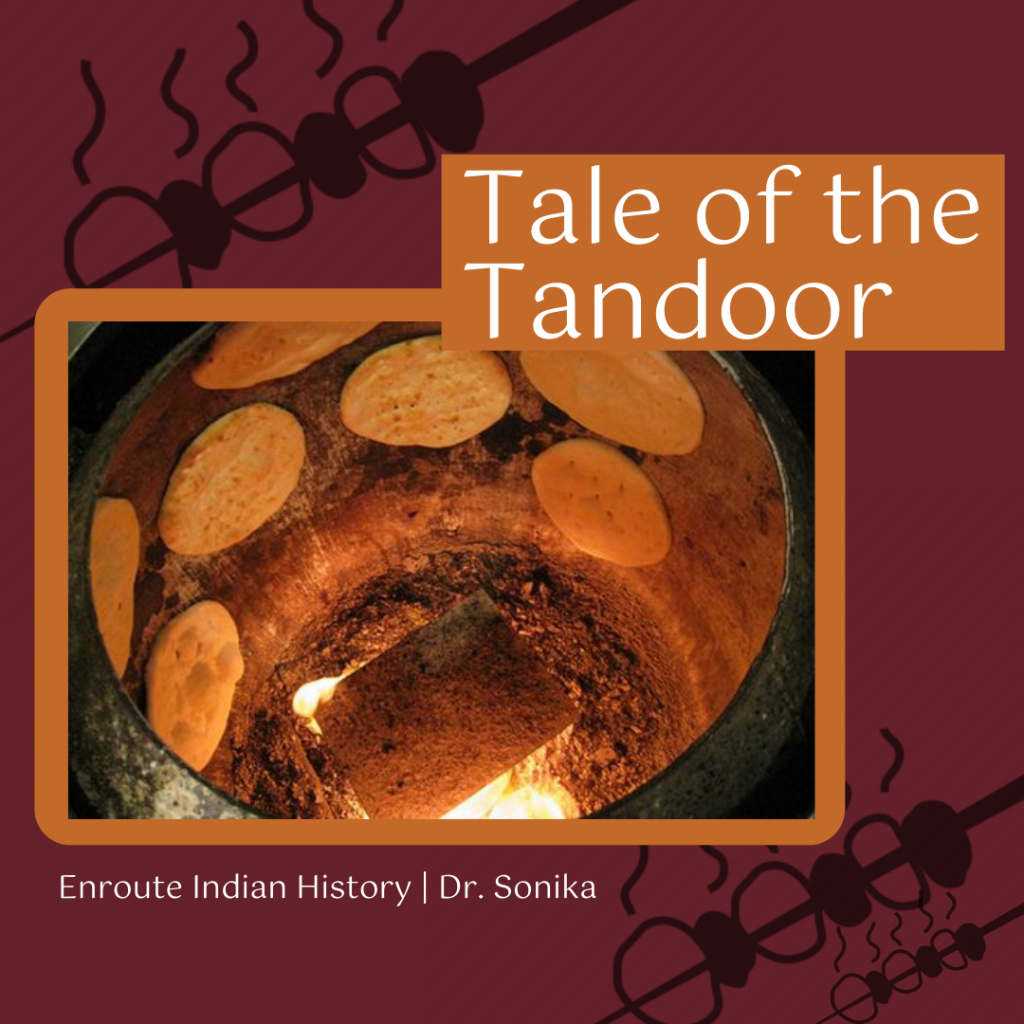
Article by EIH Subject Matter Expert
Dr Sonika Sandhu
It is not just a clay urn but a cultural symbol of the Indian cuisine world over. It is the pillar of Punjabi and Mughlai cuisine and the progenitor of many popular snacks and dishes. From Naan, Kulchas to grilled meats and vegetables many of our most iconic and recognizable dishes were born in the searing heat of the Tandoor. Tandoor take center stage in the cuisines of many countries namely: Azerbaijan, the Balkans, Turkey, Iran, Armenia, and Uzbekistan as well as the Middle East as a whole, Central Asia, Burma, and Bangladesh. According to Raichlen, “the preferred barbecue pit throughout Central and South Asia and the Caucasus region,”
A tandoor typically is a cylindrical clay oven used for baking and grilled food. It is a slow cooking method. The source of heat in a tandoor is wood fire or charcoal burning within the tandoor itself. The tandoors are lit and continuously worked over a long time to achieve and maintain high cooking temperatures of nearly 480 °C.
The history and antiquity of the Tandoor is equally interesting as the food that comes out of it. Its spread and usage is not only restricted to the Indian Subcontinent but spans various regions of Asia and Middle East. Tandoor and this style of cooking remains as one of the oldest documented cooking methods and was in use even during the Indus Valley period 5000 years ago. The oldest Tandoor has been unearthed at the site of Kalibangan, in present day Rajasthan. The etymology of the word also has ancient roots, some scholars believe the name comes from the Sanskrit word ‘Kund’ while some attribute it to Persian descent from ‘Tata Andar’ translated to being hot within. Its popular use in our conscious memory comes with the Mughals. During the thirteenth and Fourteenth century there was a distinct shift in the cooking style of the Mongols who were the ancestors of the Mughals of the Indian
Subcontinent, they developed their own cuisine at this time. Their dishes became more refined and they started incorporating different cooking methods. The Mongols started appointing the Turks at important government positions because of their administrative capabilities and high literacy rate. The Turks were worldly travelers and were in constant touch with the Arabs, Persians and other cultures at the time. They used various kinds of grains, and had a variety of breads which were baked in their free standing clay oven called the Tannurs. Hence it was Turks who introduced the Mongols to the Tandoor who subsequently carried it along on their travels and campaigns.
The modern tandoor usage in India can be traced to the Mughal times and is dated to 16 th -17 th century especially during the reign of Emperor Jehangir they were immensely popular. These vessels were particularly used by people of the northern frontier provinces. As can be gathered they continue to be used till date, forming a part of our continuous cultural repertoire.
These regions were also the birth place of Sikhism and possibly that’s why Tandoor and this style of cooking is more associated with the Punjabi culture. The founder of Sikhism Guru Nanak Dev, saw the merits in using tandoors to bring people and communities together and to instill equality within a very castist society. This approach worked and even today many villages in Punjab have communal tandoors which act as the meeting place for people to share a light gossip.Over the years tandoors have also evolved. Traditional tandoors were made of clay and goat wool, but today metal drums are used and the source of fuel is no longer wood or charcoal but gas. Traditionally tandoors were placed in pits or hollow spaces in the ground in a designated area in the common courtyards, away from children and animals. It was cared for and maintained by the women of the household, from collecting firewood, to lighting the tandoor it was a women’s domain and work. Baking was considered an art and this responsibility was given to the elder women who had both experience and expertise in handling the tandoor. They were assisted by younger women of the household. In short baking was a communal activity for the women and also a way to teach the young traditions and flavours of the home. The tandoor was also a meeting place for the women, once communal tandoors became the norm, women from neighbourhood would come together and discuss & share their day to day news,
issues and ideas. The tandoor would have been the place where many folk stories and poetic styles would have originated. While waiting for breads to be baked the women must have sang, created couplets sometimes of love and sometimes of mischief, sometimes just to pass on the emotion they are feeling. The tandoor allowed stolen moments of peace and respite to the ever busy women.
A shift from the traditional to modern kitchen and subscription to professional bakeries has led to a loss within the intimate and close interaction between the women of the community and neighbourhood and a loss of the tandoor culture. An interesting analogy can be thought of between modern day bakeries and cafes where people come to discuss ideas & thoughts on society, politics and economic etc affairs. The tandoors of the past played this role in the lives of the women, a meeting















